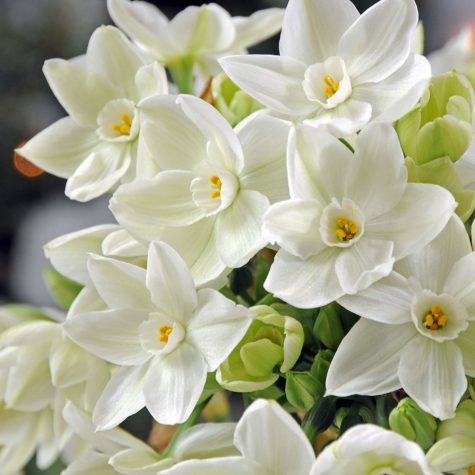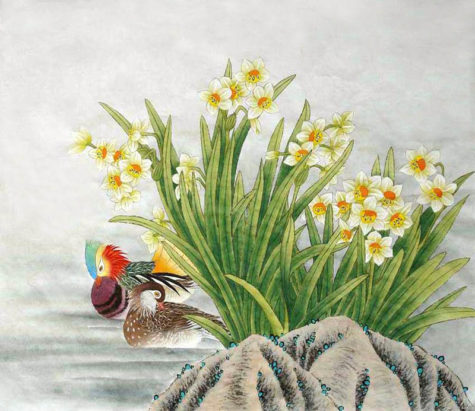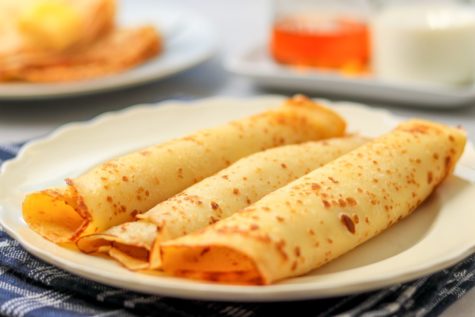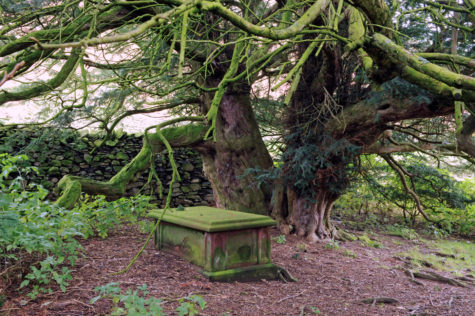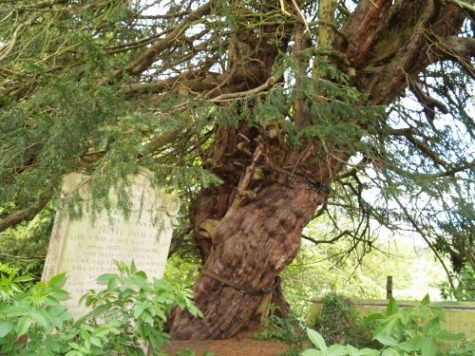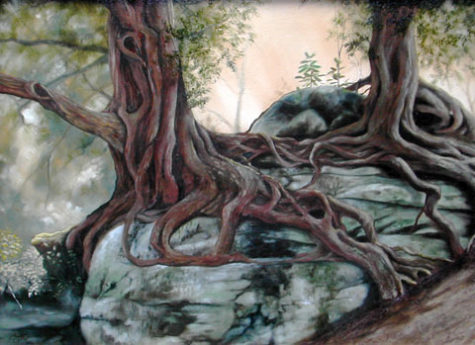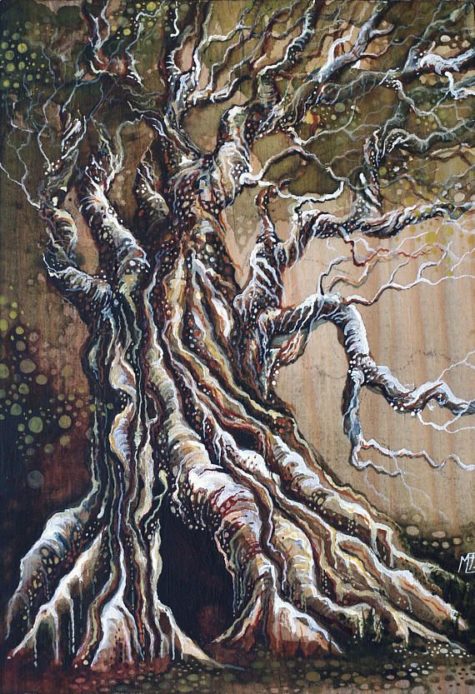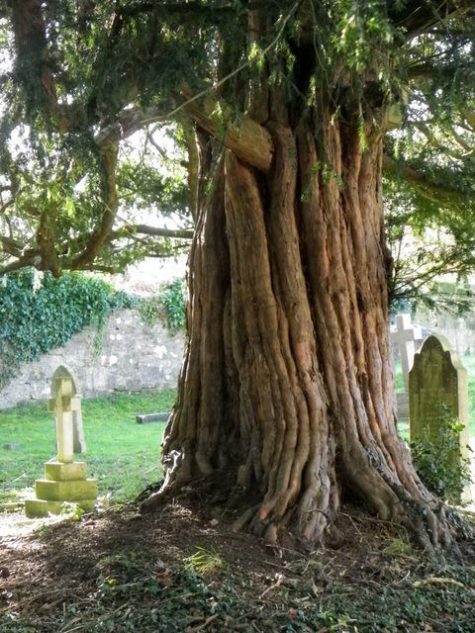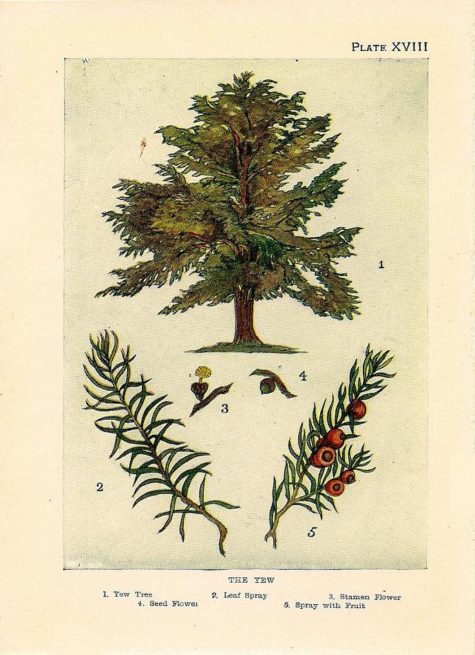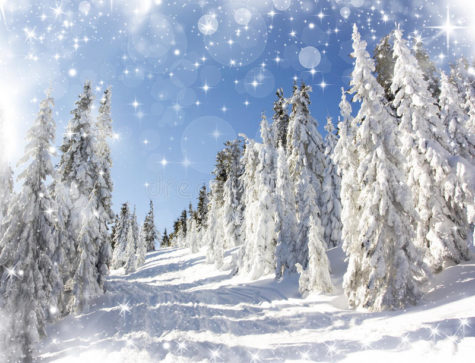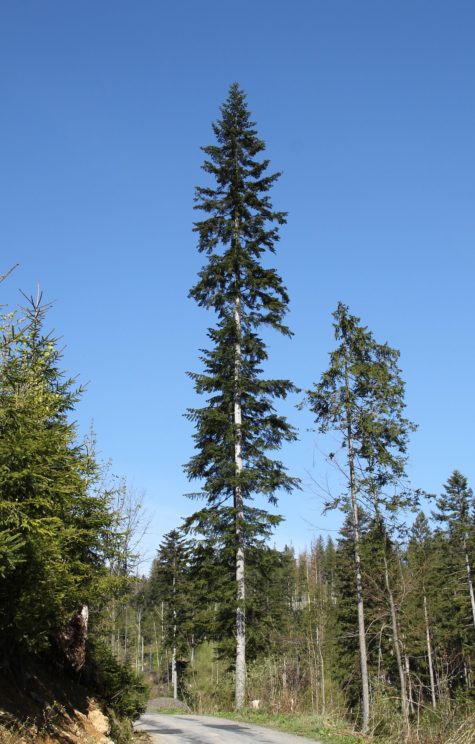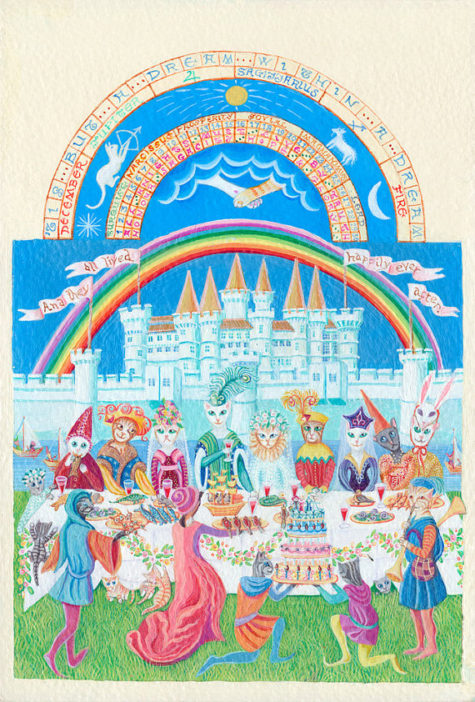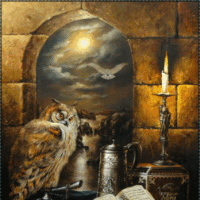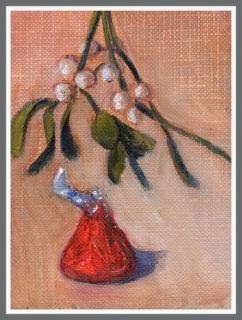Rebirth
- Ruler: Dionysus
- Type: Plant
- Sign: Virgo
- Tarot Card: The Hermit
- Magickal Form: Flower, Essential Oil
The Narcissus is often assigned to the month of December, and is also associated with the Chinese New Year which occurs in February.
Wear this scent to entice others and promote self-love and self-confidence. Overuse can attract stalkers and create egomaniacs – so don’t over do it. Rub on pink candles to meet new people. Rub black Narcissus oil on black candles for self-hypnosis. Use the oil on red candles to hypnotize and bewitch another.
In China, for centuries, narcissus bulbs have been placed in bowls with rocks and water. They are then “forced” into flowering by the Chinese New Year to acquire good fortune.
This old-fashioned flower for late spring is famous for its fragrance, which is one of the most expensive in the world. The Romans made a perfume from this flower, and it featured in early Arab perfume as well. The scent is a combination of jasmine and hyacinth. Its fragrance affects the nervous system (Mercury again), relieving stress.
These beautiful flowers emit sweet, lovely fragrances long used to manifest new relationships or to enrich the love already shared with another. The purple varieties seem to be best for this use. In the Middle East, the scent is thought to be aphrodisiac.
Magickally, this old-fashioned flower is dedicated to virgins, hermits, those who practice a solitary spirituality, and people who just enjoy being alone. Reasonably, it is connected to the sign of Virgo and the Hermit card. Venus bathed in narcissus flowers before winning a contest of beauty against Juno and Diana, but the plant is sacred to Adonis.
You would think then that this magick herb would be associated with the Sun, but instead it is considered a Mercury herb. Its name comes from the word for “stuck dumb” due to the power of its poisons to take away speech, which Mercury rules. Narcissus is specific for Mercury magickal works, such as those leading to parthenogenesis and invisibility.
Narcissus vs Daffodil
Though their botanic name is Narcissus, they are often also called daffodils, and sometimes jonquils, or paper whites. In England, because of their long association with Lent, they’re known as the “Lent Lily.”
The term “Daffodil” commonly refers to Narcissus with large trumpets, but may be used for all types of Narcissus . This is the official common name for ANY of the plants that fall into the genus Narcissus. So, if the plant is considered a Narcissus, it is also considered a daffodil as well. However, most people use the term “daffodil” when referring to the large, trumpet-shaped flowers of the Narcissus pseudoNarcissus .
- In Victorian flower language daffodils signified regard and chivalry, whilst the Narcissus meant self esteem, female ambition or vanity.
You can read more about the magickal properties of the Daffodil here: Daffodil Magick and Lore.
Narcissus in Mythology
The Narcissus is named after the legendary young Greek man of the same name. Narcissus was pretty full of himself because he had been given the gift of great beauty by the gods. One day, a sweet young wood nymph named Echo spotted Narcissus hanging out by a stream and instantly fell in love with him. However, he was so busy being completely self-absorbed that he ignored Echo, and she wasted away from loneliness until nothing was left of her but her voice. Thanks to this tragic story of unrequited love, the Narcissus is sometimes used to represent a love that is one-sided.
Later, the goddess Nemesis, although in some versions, it’s Venus, got wind of what had happened to Echo, so she decided it was time to teach Narcissus a lesson. She led him to a stream, where he happened to notice the most beautiful young man he had ever seen – it was his own reflection, and he was so vain that he fell in love with his own image, transfixed, and forgetting to eat and sleep. Some of the other gods were worried that Narcissus was going to starve to death, so they turned him into a flower, which now blooms every year in the spring.
- Alternatively
It is possible that this plant wasn’t named after the youth who fell in love with his reflection in a pool of water. Pliny states that the name was derived from the word “narkao, to benumb, due to the plant’s dramatic effects on the nervous system when taken internally. Never eat any part of this plant.
- Ruler: Mercury
- Type: Prepared Food
- Magickal form: Round flat cake cooked on a griddle
- Other names: Flapjack, hot cake, griddlecake
The flapjack, or pancake, dates from ancient Egypt and is a food of prosperity. Its three main ingredients – flour, milk, and eggs, symbolize life, nurturing, and rebirth. They are best eaten on the full moon, or on a Tuesday to round out your fortune. Smother with syrup to attract more money. Also eat pancakes to win races or athletic games.
What is a pancake?
A pancake (or hotcake, griddlecake, or flapjack) is a flat cake, often thin and round, prepared from a starch-based batter that may contain eggs, milk and butter and cooked on a hot surface such as a griddle or frying pan, often frying with oil or butter. Archaeological evidence suggests that pancakes were probably the earliest and most widespread cereal food eaten in prehistoric societies.
The pancake’s shape and structure varies worldwide. In Britain, pancakes are often unleavened and resemble a crêpe. In North America, a leavening agent is used (typically baking powder) creating a thick fluffy pancake. A crêpe is a thin Breton pancake of French origin cooked on one or both sides in a special pan or crepe maker to achieve a lacelike network of fine bubbles.
A well-known variation originating from southeast Europe is a palačinke, a thin moist pancake fried on both sides and filled with jam, cheese cream, chocolate, or ground walnuts, but many other fillings—sweet or savoury—can also be used.
When potato is used as a major portion of the batter, the result is a potato pancake. Commercially prepared pancake mixes are available in some countries. When buttermilk is used in place of or in addition to milk, the pancake develops a tart flavor and becomes known as a buttermilk pancake, which is common in Scotland and the US.
Buckwheat flour can be used in a pancake batter, making for a type of buckwheat pancake, a category that includes Blini, Kaletez, Ploye, and Memil-buchimgae.
Pancakes may be served at any time of the day with a variety of toppings or fillings but in America they are typically considered a breakfast food. Pancakes serve a similar function to waffles. In Britain and the Commonwealth, they are associated with Shrove Tuesday, commonly known as “Pancake Day”, when, historically, perishable ingredients had to be used up before the fasting period of Lent.
Pancake Day Pancakes
- 4 large eggs
- 1 cup milk
- 1 tablespoon butter, melted
- 1 tablespoon granulated sugar
- 1 teaspoon vanilla
- 1/2 teaspoon salt
- 1 cup all-purpose flour
- powdered sugar
- fresh lemon juice
Preheat oven to 350°F.
Combine eggs, milk, butter, sugar, vanilla, and salt. Stir in the flour, blending until smooth. Let stand 15 minutes.
Heat saucepan medium-high heat. Add a little butter to the pan and swirl around. Add 2 large spoonfuls of batter, tilting pan to coat bottom. Cook until golden on the bottom, about 45 seconds. Turn pancake over and cook until bottom is lightly browned, about 30 seconds.
Keep warm while making the rest of the pancakes.
Butter a casserole dish. Sift powdered sugar pancake, then sprinkle lightly with lemon juice. Roll pancakes and place in the casserole dish. Cover and bake 10 minutes.
Sources:
- Wikipedia
- Encyclopedia of Magickal Ingredients
- Web Holidays
- Ruler: Saturn
- Type: Tree
- Magickal Form: Branch and Leaves
- Meaning: Complete change in life-direction or attitude
This is a dark tree, ruled by the Crone. It is used in spells to raise the dead. Yew is also used in ritual to help make the transition into menopause. According to Celtic tree mythology, the Yew is the tree of the day before the Winter Solstice (Approx. December 21).
- Latin name: Taxus baccata.
- Celtic name: Idho (pronounced: Ih’ huh).
- Folk or Common names: English Yew.
The evergreen yew, which lives to an immense age, extending over many generations of men, is a natural symbol of life everlasting, and seems to have been so regarded from time immemorial, alike by pagans and by Christians.
Because of its great longevity, the yew is a symbol of everlasting life. It grows in an unusual way, too, its new stems growing down the outside of the tree, giving the yew an association with rebirth and regeneration, as the new is born from the old. Adding to this symbolism is its habit of putting in a growth spurt when it is around 500 years old.
So sacred was the yew as a symbol that – to a pre-Christian society – wherever it grew was considered to be sacred ground. It was considered both immoral and illegal to chop down the tree. It is likely that the yew is often seen in churchyards because the church itself would have been built on this sacred ground in the presence of the tree, in an effort to align the incoming Christian belief system with pagan traditions.
The association of the tree with death therefore started to overlay its former meaning. Because the berries of the yew are poisonous, they can effectively carry people into the spirit world.
At English country funerals formerly, the mourners often carried branches of yew, which they laid with the dead man in the grave. Small sprigs were also inserted in the folds of his shroud in some districts, before the coffin was nailed down. These typified, not the end of life, but its continuance in the resurrection to come.
Similarly, yew-boughs are usually included today in church decorations at Easter, because they symbolize the triumph of life over death and so are fitting emblems of the Resurrection.
The hollow center of the yew tree is a symbol not only of the power that lies in empty space, but underlines the significance of this tree as belonging, in part, to a spiritual dimension. Recently, the yew as a symbol of life has been shown in a practical and unexpected way. One of the constituent chemicals of the tree, taxol, has been found to be efficacious in curing breast cancer.
Old Ideas About The Yew
In Elizabethan times it was considered an unlucky plant. The Elizabethans tossed sprigs of yew into graves to ensure that the spirits of the dead did not come back to haunt the living.
To cut down a yew tree growing in a churchyard, or to burn or damage its branches, is very unlucky. It is also said to be unlucky to bring yew branches into the house, and most people are careful to omit them from the evergreens used for Christmas decorations.
In the Scottish Highlands, in the days of clan warfare, there was a curious tradition which said that if a chief too a piece of churchyard yew in his left hand, and then denounced or threatened his enemy, the latter, though present, would hear nothing, though all around could hear quite clearly what was said. This presumably, enabled the speaker to claim afterwards that he had given due warning of his intentions, while at the same time retaining the advantages of a surprise attack on a totally unprepared victim.
Although at one time it was considered dangerous to carry a sprig or branch of yew into the home, in Herefordshire, a girl who wished to dream of her future husband went to a churchyard that she had never visited before and plucked a sprig, which she laid under her pillow at night. This would enable her to see her future partner in her dreams.
In the north-midland counties of England, lost goods could be found if the seeker took a branch of yew and held it out before him as he walked. He would be led straight to the place where the lost things were, and when he reached it, the branch would turn in his hand.
The yew is also renowned for protecting homes and other buildings from witches and evil spirits. It is believed that you are likely to die within twelve months if you trim or cut down a yew tree.
Magickal Associations of Yew
Bulls are associated with this tree, as are female goats. The bird associated with Yew is the eaglet, since the eaglet’s appetite is insatiable, and the bones of its nest are white like the snow on its cliff-ledge. The Yews colors are white and silver and it is associated with the element of water. The Yew is associated with the planet Saturn and with the metal lead. In Old England the Yew was known as “The Witches Tree” since it is associated with sorcery and magick.
Magickal usage:
The time of Yew is known as a time of death, and so on the day before Yule it said that is not a good idea to do actual spell work, instead it is suggested to do rituals of the season concerned with reincarnation. Because the Yew grows to such an old age, it has become a symbol of stability in Celtic areas of the world and so is often used as the central “World Tree” in ritual spaces.
As one of the three magickal trees (along the Alder and the Black Poplar) associated with death and funerals, the Yew has often been planted in graveyards. Yew sends up new trees from its roots, so is a powerful symbol of death and reincarnation.
Yew wood is appropriate for magickal tools such as wands and staves. In ancient times Yew sticks were carved with the Ogham characters as tools of divination. The Futhark features a 13th Rune, which is considered one of the most powerful Runes and represents a stave cut from a yew tree. This Rune is regarded as the stave of life and death. Yew can be dried and burned as an incense to contact spirits of the dead – and even to raise the dead.
If you are going to plant a Yew tree, it is best planted in the South-West corner of the property.
Magical History:
The name “Yew” is a corruption of the Anglo-Saxon word ‘eow’. The word ‘Taxus’ is from the Greek word ‘Taxon’, meaning ‘bow’. The 5000 year old “Ice Man”, discovered in the Alps, had a bow and axe handle made of Yew.
The Yew is known as the ‘Tree of Death’ through out Europe and is associated with the season of winter. It is sacred to many Dark Goddesses: Banbha, Amalthea (mother of the horned Dionysus), Morrighan, The Erinyes, Cailleach Beara, Berchta, and Hekate.
Shakespeare recognized the relationship of Yew and Heckate and referred to the contents of her cauldron as “slips of yew, silver’d in the moon’s eclipse…” (Macbeth) – and elsewhere Shakespeare makes ‘hebenon, the double-fatal yew’ the poison which Hamlet’s uncle pours into the king’s ear. Heckate’s sacred tree of death is said to root in the mouths of the dead and release their souls, and also absorbs the odors of death itself.
Yew wood is tough and durable and was used for making shields and spears, and also – using both heartwood and sapwood to gain extra strength – the famous English longbow that helped the English win the Battle of Agincourt in 1415, at which they were completely outnumbered. Hence the yew is also a symbol of the warrior.
Herbal usage:
This plant is poisonous and should never be ingested unless you are 100% sure that you know what you are doing. The needles and branch tips have been used to treat lung diseases and bladder problems. recently a new cancer drug, Taxol, has been derived from its bark and berries.
Sources:
- Encyclopedia of Magickal Ingredients
- Encyclopedia of Superstitions
- Element Encyclopedia of Secret Signs and Symbols
- Dutchie.org
According to Celtic tree mythology, the Silver Fir is the tree of the day of the Winter Solstice. The Winter Solstice. This usually takes place on December 20th or 21st, although it does sometimes occur on the 22nd or 23rd (check your calendar as it changes from year to year).
- Latin name: Abies alba.
- Celtic name: Ailim (pronounced: Ahl’ em).
- Folk or Common names: Common Silver Fir, Balm of Gilead Fir, Balsam Fir, American Silver Fir.
- Parts Used: Needles, wood, sap
Magical History and Associations:
The Silver Fir is associated with the moon and with the planet of Jupiter. Its colors are piebald and light or pale blue. Its birds are the eagle and the Lapwing, and its animal association is the red cow. Its stones are Tourmaline and Amber – and it is a feminine herb. This tree belongs to the triple aspect Goddess in Celtic lore, offering learning, choice and progress. The tree is sacred to many Goddesses: Artemis (the Greek Goddess of Childbirth), Diana and Druantia among them. It is also sacred to the Gods Osiris and Attis, both who were imprisoned in Fir/Pine trees.
Magickal usage:
Burn to cleanse a room of negative vibes. This is a wonderful incense for healing and strengthening the physical, emotional, and spiritual body. The scent opens the heart and increases endurance.
The Silver Fir is used for magick involving power, insight, progression, protection, change, feminine rebirth, and birth. The Silver Fir and the Yew are sisters standing next to each other in the circle of the year and their foliage is almost identical. However the Yew is known as the tree of death and the Silver Fir is the tree of birth or rebirth. The Silver Fir was a sacred tree to the Druids who felt that it stood for hope. The Silver Fir wood is used for shape-shifting and magic involving change, since it offers a clear perception of the present and the future.
The wood chips are sometimes used as incense and the wood can be used in the construction of magickal musical instruments. Burning the needles of the Silver Fir or sweeping around the bed with a branch that has been blessed will protect a new born baby and its mother. In the Orkney area of Scotland, the new mother and baby are ‘sained’ by whirling a fir-candle three times around her bed.
For a ‘Weather Witch’ the cones of the Silver Fir warn of wet weather and foretells when a dry season approaches. Charms made of Fir can be given as good luck tokens to departing friends. In its appearance (and in its current, and undoubtedly ancient, use) the Silver Fir is the quintessential Yule tree. Its branches can be used as decorations at Yule time either as wreaths or as garland, where it will provide protection for the household and its occupants.
Recommended Reading:
- Year of Moons, Season of Trees
- Tree Medicine Tree Magic
- A Druid’s Herbal
- Celtic Astrology
- Glamoury: Magic of the Celtic Green World
- The Book of Druidry
Source: Dutchi.org
- Nature Spirits: Snow faeries, Storm faeries, Winter Tree Faeries
- Herbs: Holly, English Ivy, Fir, Mistletoe
- Colors: Blood Red, White and Black
- Flowers: Holly, Poinsettia, Christmas Cactus
- Scents: Violet, Patchouli, Rose Geranium, Frankincense, Myrrh, Lilac
- Stones: Serpentine, Jacinth, Peridot
- Trees: Pine, Fir, Holly
- Animals: Mouse, Deer, Horse, Bear
- Birds: Rook, Robin, Snowy Owl
- Deities: Hathor, Hecate, Neith, Athena, Minerva, Ixchel, Osiris, Norns, Fates
Power Flow:
To endure, die and be reborn. Earth tides turning. Darkness. Personal alchemy. Spiritual paths, Reach out to friends and family, the lonely and needy.
From: Moon Magic
Art by Jane Haworth
